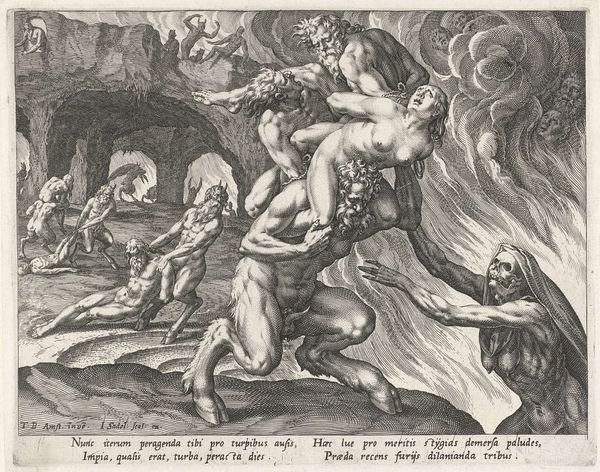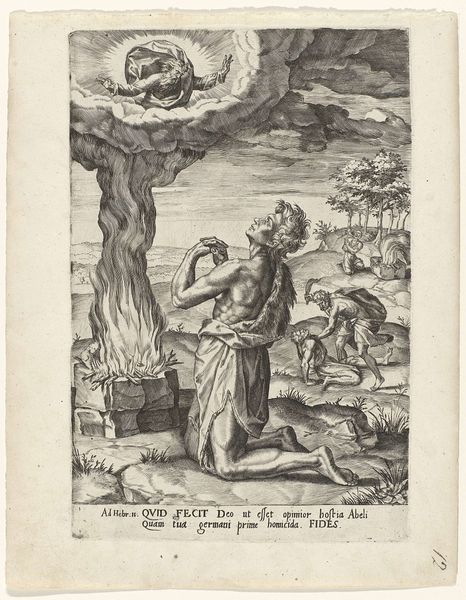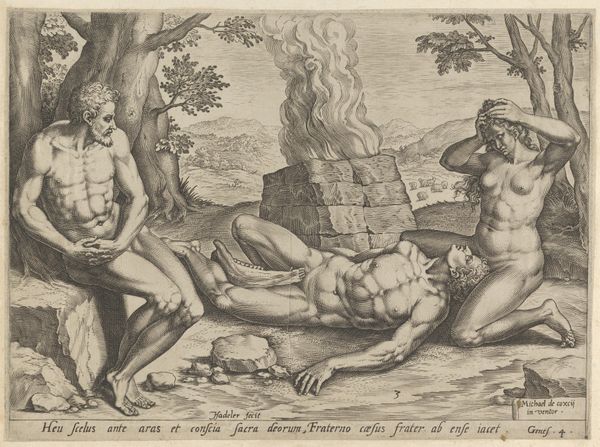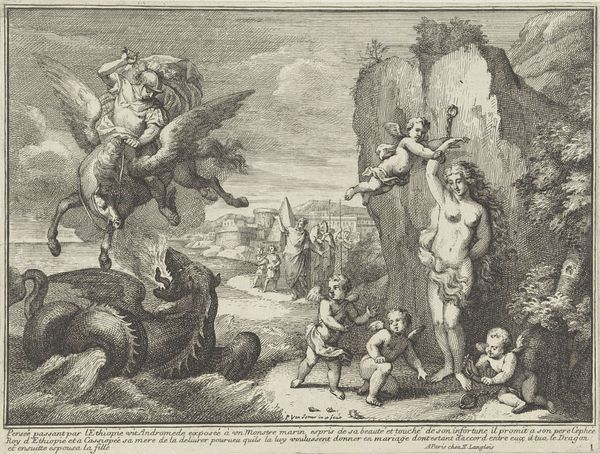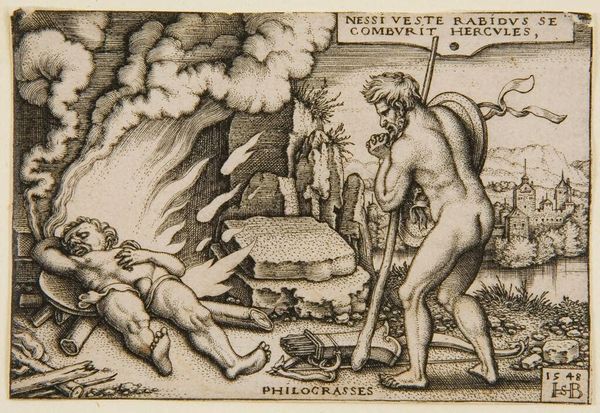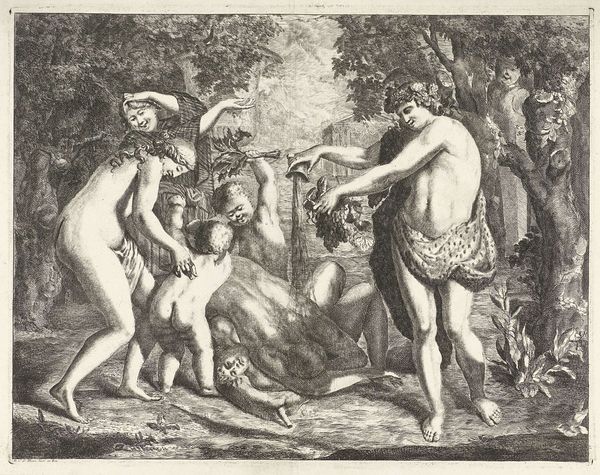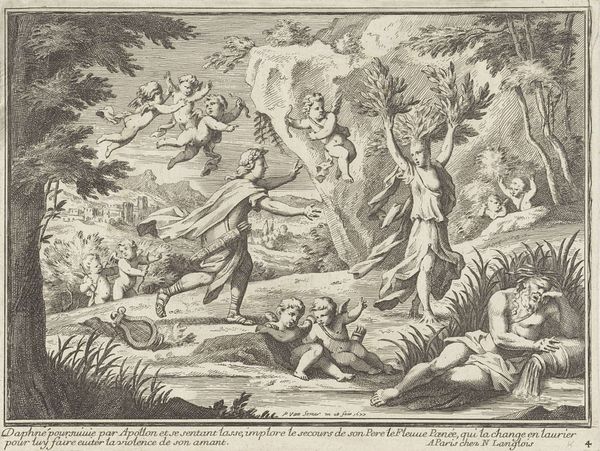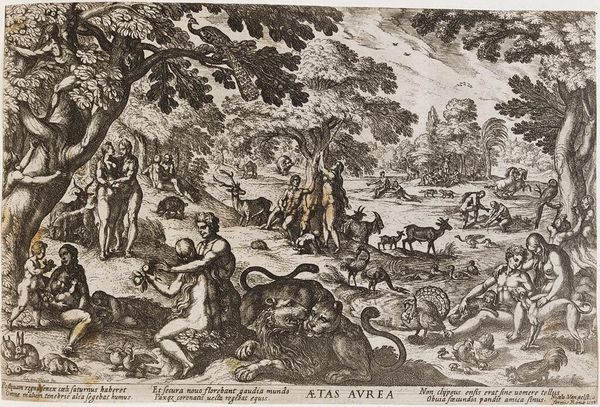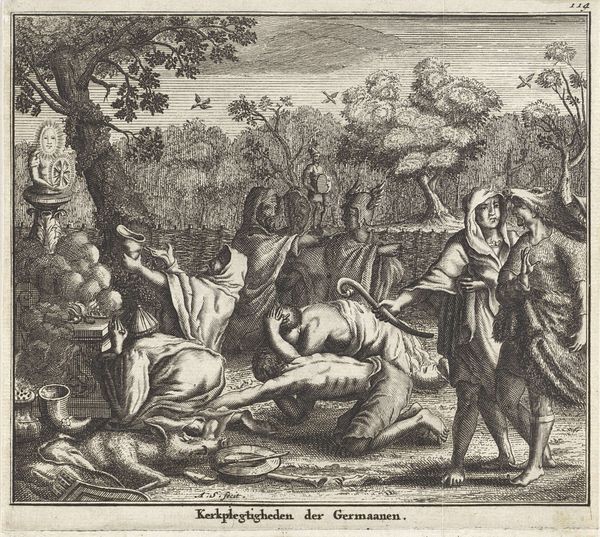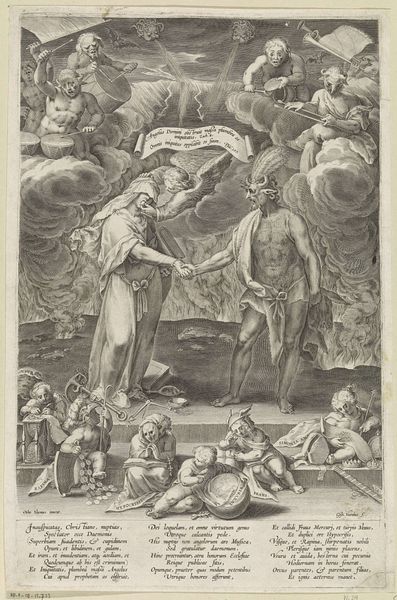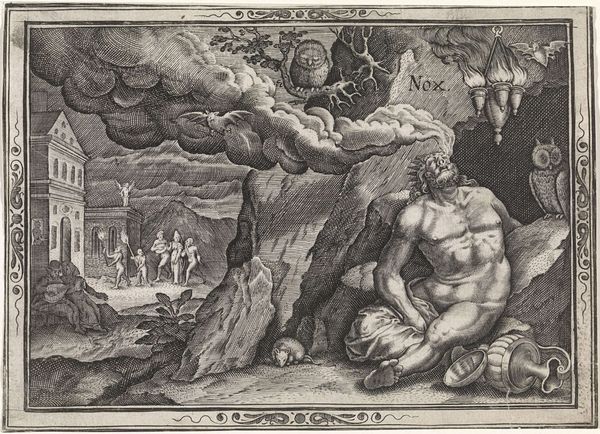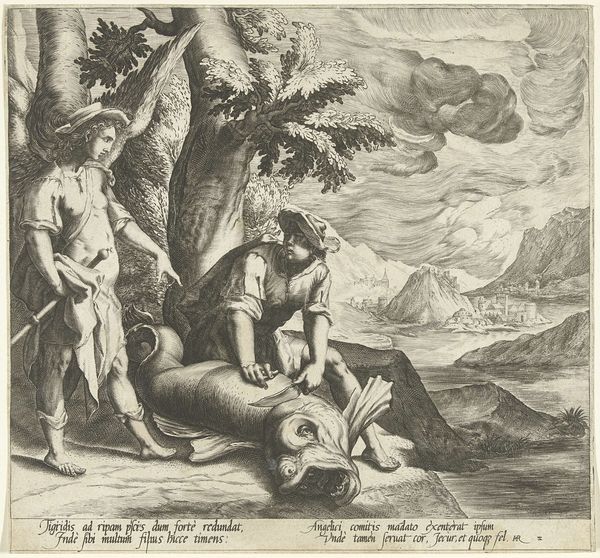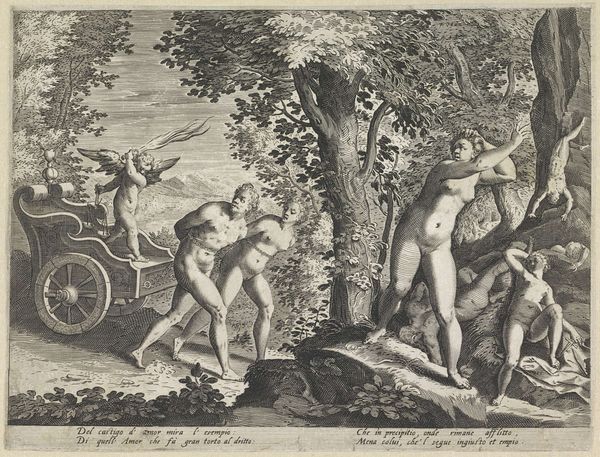
print, engraving
#
baroque
# print
#
old engraving style
#
figuration
#
line
#
genre-painting
#
history-painting
#
engraving
Dimensions: height 142 mm, width 161 mm
Copyright: Rijks Museum: Open Domain
Editor: Here we have Albert Schut’s engraving, "Germanic families on the grounds in front of their houses", dating from around 1708-1713. The image depicts a cluster of figures in a somewhat idyllic rural setting, though there’s a strangeness, an almost performative quality, to their naturalism. What historical narratives do you think this work is engaging with? Curator: It's fascinating how Schut, working in the Baroque style, deploys a hyper-idealized version of Germanic life. This wasn't just an artistic choice, but a politically charged one. Remember that the 18th century saw the rise of nationalist sentiment and a renewed interest in ‘origins.’ Editor: So it’s not necessarily an objective record? Curator: Precisely. The 'Germanic family' here becomes a symbol. Notice how the bodies are idealized, even classical in their proportions, yet placed in this ‘primitive’ setting? It speaks to a desire to construct a heroic ancestry, legitimizing certain power structures and national identities. Consider, too, who gets to define this ideal. Where are the marginalized voices in this representation of community? Editor: That makes me think about whose vision of history we're inheriting when we see this kind of artwork. Curator: Exactly! The artist selectively romanticizes an era, suppressing any discordant elements. It is a calculated attempt to evoke a certain kind of pride. Editor: I guess I was drawn in by the seeming simplicity, but I’m now questioning who and what that simplicity actually serves. Curator: Good! Examining these seemingly straightforward images is the key to unpacking complex historical and social narratives. Always question whose story is being told, and who is being left out.
Comments
No comments
Be the first to comment and join the conversation on the ultimate creative platform.
